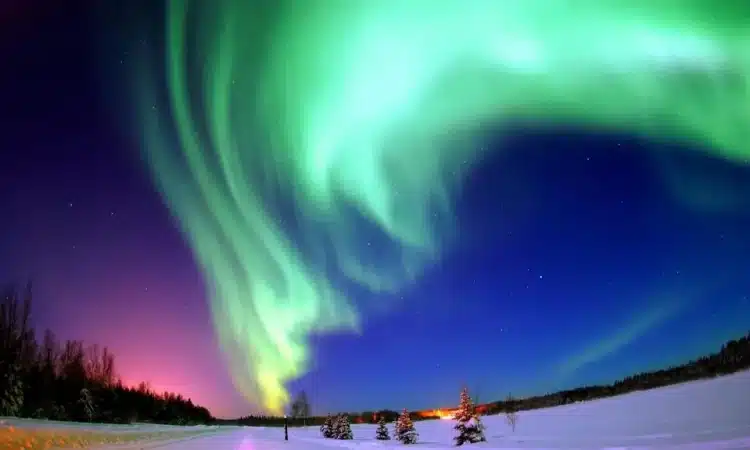
«Interplanetary shocks» that hit Earth’s magnetic field head-on are crucial for scientists to forecast in order to protect any infrastructure that conducts electricity, according to a new study published today in Frontiers in Astronomy and Space Sciences.
The Impact of Aurora Displays
Magnificent displays of green, red, purple, and blue aurora—such as the global geomagnetic storm on May 10—signal the arrival of strong currents at Earth. These currents have the potential to damage power transmission lines, oil and gas pipelines, railways, and submarine cables.
Understanding Interplanetary Shocks
An interplanetary shock, which can lead to sightings of the beautiful Northern and Southern Lights, is a disruption in the solar wind caused by coronal mass ejections (CMEs) from the sun. A CME is a cloud of magnetic fields and charged particles from the sun that streams into space at speeds of up to 1,900 miles (3,000 kilometers) per second.
This disturbance compresses Earth’s protective magnetic bubble, often triggering auroras. However, the impact angle of these interplanetary shocks is key to the strength of the resulting currents, according to the research.
Importance During Solar Maximum
Interplanetary shocks are much more common during solar maximum, a period scientists believe we are experiencing now. Geomagnetically induced currents can damage any infrastructure that conducts electricity. The more powerful an interplanetary shock, the stronger the currents and auroras. Predicting if an incoming interplanetary shock will be head-on, rather than a glancing blow, can help protect infrastructure before the strike, say the researchers.
Higher Peaks of Geomagnetically Induced Currents
The study found that shocks hitting Earth head-on induce the strongest geomagnetically induced currents. By analyzing a database of interplanetary shocks and cross-referencing it with readings from a natural gas pipeline in Mäntsälä, Finland—located in the “aurora zone«—scientists discovered that frontal shocks cause higher peaks in these currents. This is due to the greater compression of the magnetic field.
The most intense peaks occurred around «magnetic midnight,» the time when the North Pole is between the sun and Mäntsälä on Earth’s night side.
Space Weather and Auroras
«Auroras and geomagnetically induced currents are driven by similar space weather conditions,» said Dr. Denny Oliveira of NASA’s Goddard Space Flight Center, the lead author. Space weather refers to the flow of charged particles from the sun, known as the solar wind. «The aurora is a visual warning that electric currents in space can generate these geomagnetically induced currents on the ground.»
The aurora display on May 10 was particularly intense. Aurora usually forms an oval around the polar regions, but on that date, several CMEs caused the oval to expand significantly. «During severe geomagnetic storms, the auroral region can expand greatly,» said Oliveira. «Typically, its southernmost boundary is around latitudes of 70 degrees, but during extreme events, it can reach 40 degrees or even further, as seen during the May 2024 storm—the most severe storm in the past two decades.»

